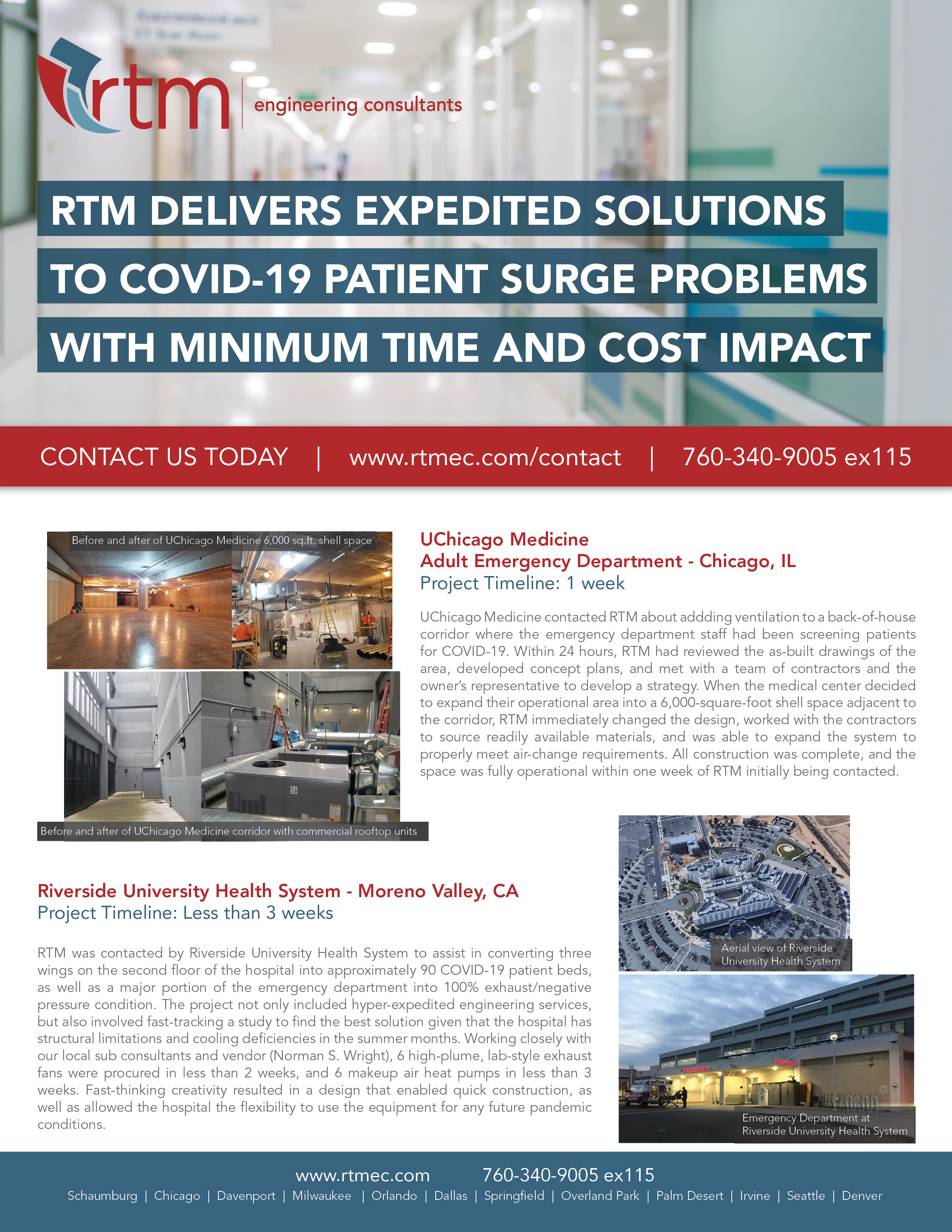As the Coronavirus COVID-19 continues to spread across the country, hospitals and clinics will need to find ways to support an increase in patients who test positive for the virus. The American Society for Health Care Engineering (ASHE) and the CDC both recommend that if possible all coronavirus patients be isolated in rooms at negative pressure, allowing air to flow inwards, and exhausted directly to the outside. ASHE also recommends using HEPA filters and returning air to the patient corridor as an alternative strategy. We are working with multiple hospitals across the country to help them create these isolation areas as quickly and efficiently as possible. One key area of focus is understanding how to best utilize or modify existing infrastructure before moving to new or temporary structures.
Turning an Entire Wing into an Isolation Area
Traditionally, most hospitals will already have a limited number of negative pressure Airborne Infection Isolation Rooms (AIIR) within the facility, but most likely will not have a sufficient quantity to accommodate the increased demand placed on the facility to accommodate COVID-19 patients. In an effort to help clients increase the number of AIIR patient rooms available, we have been able to develop a viable solution for designing negative pressure zones within existing facilities without any additional exhaust equipment by utilizing existing HVAC systems which already serve an entire wing or floor, and rebalancing the existing system serving the area. We are currently consulting with medical centers in Wisconsin and California who are looking into using this kind of strategy. The big advantage is that this plan keeps your isolated patients closer to all hospital technology, staff, and specialists. However, the ability to execute this type of strategy is also very dependent on the facilities occupancy, as well as the capabilities, layout, and type of their existing mechanical systems.
Leveraging Underutilized Spaces
Many ancillary services may be slow or postponing elective services during this crisis. For example, a hospital outpatient department or an off-site ambulatory surgery center, may have rescheduled all of its cases for the next few weeks. These types of facilities can be utilized by rebalancing the air of a surgical area, or for the entire facility. Additionally, smaller hospitals that are not able to use an entire wing might look into utilizing HEPA negative air machines to convert special care units, or other rooms in the facility to negative pressure.
Moving forward, hospitals will need to have a more comprehensive plan for surge isolation scenarios. We hope this information is helpful to anyone working through options in these difficult times. Please feel free to reach out if you would like any additional details on these strategies, or to share additional ideas that are being used in your local communities.

